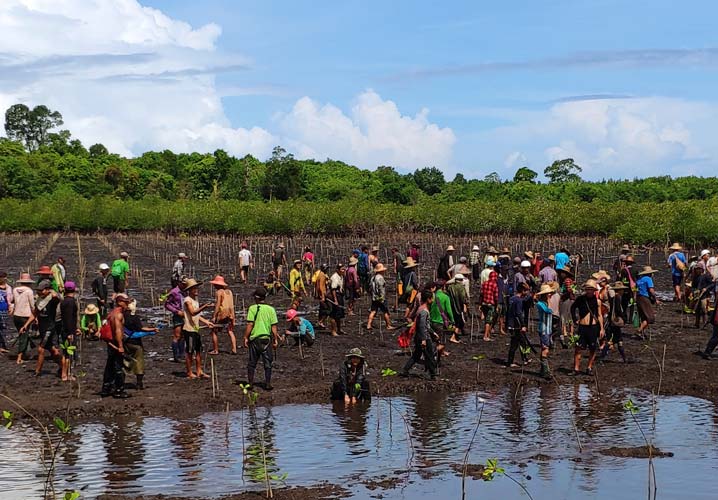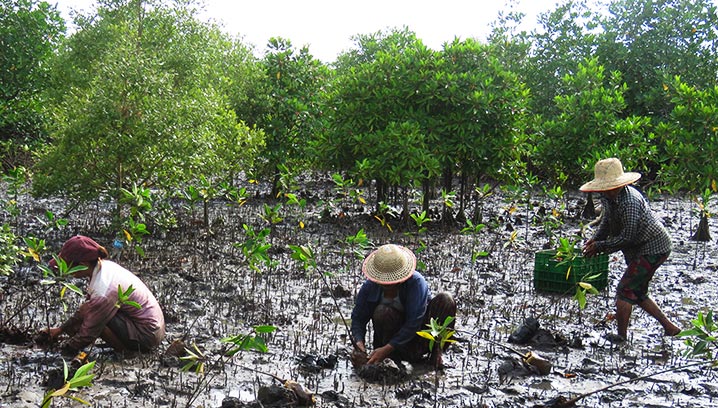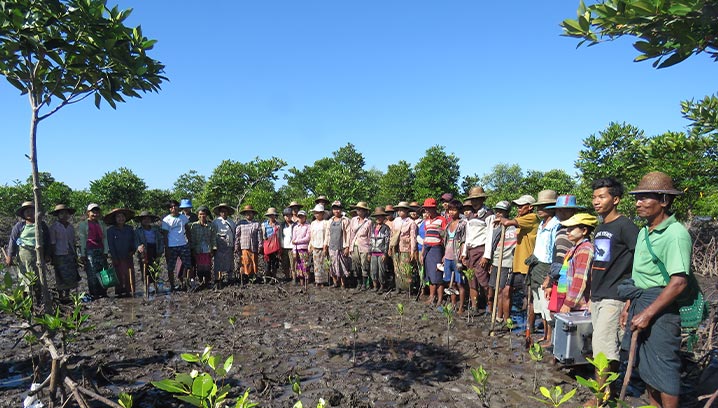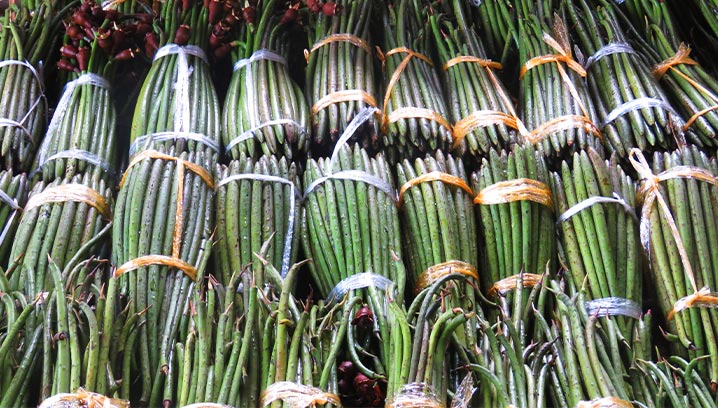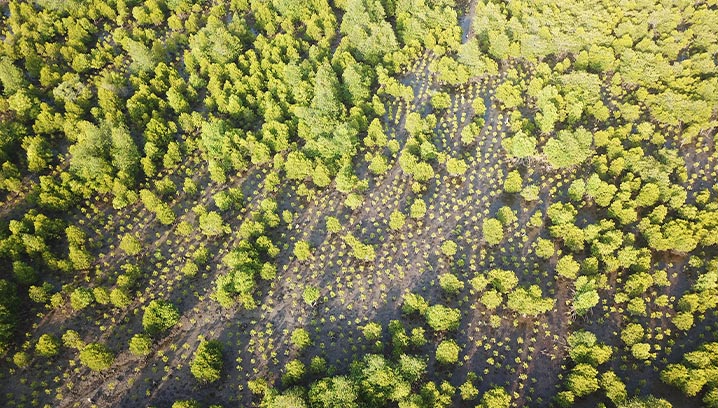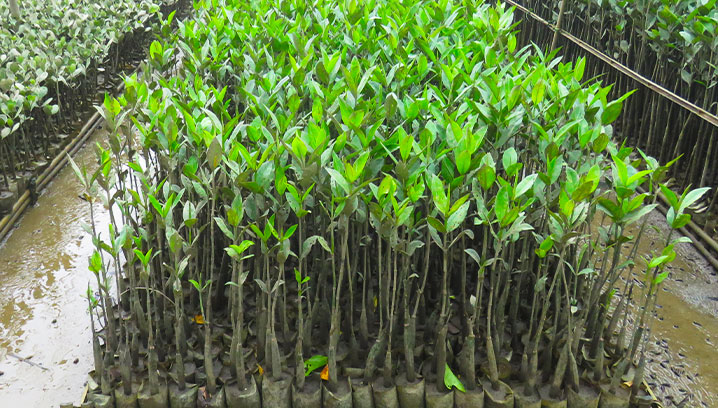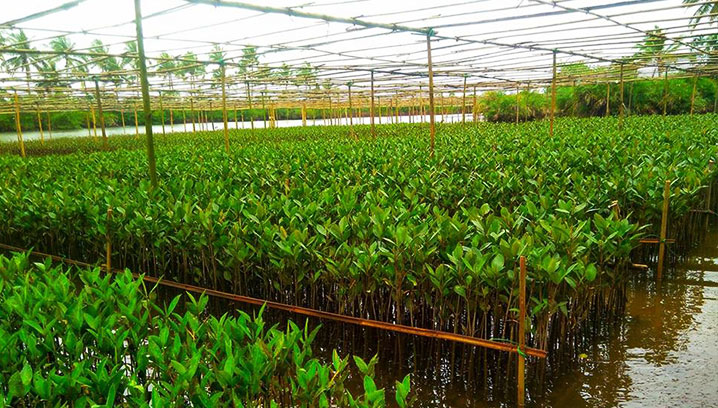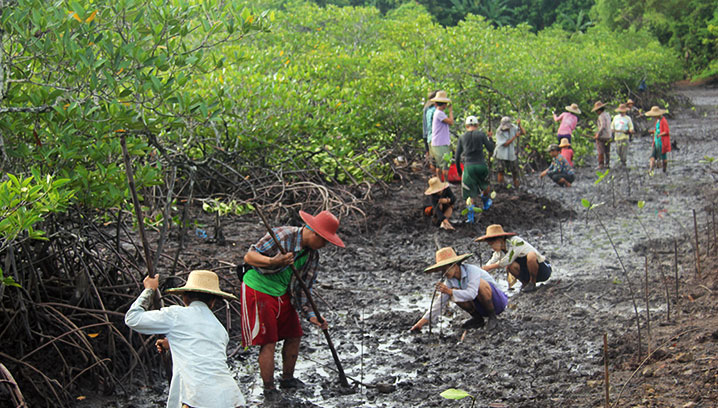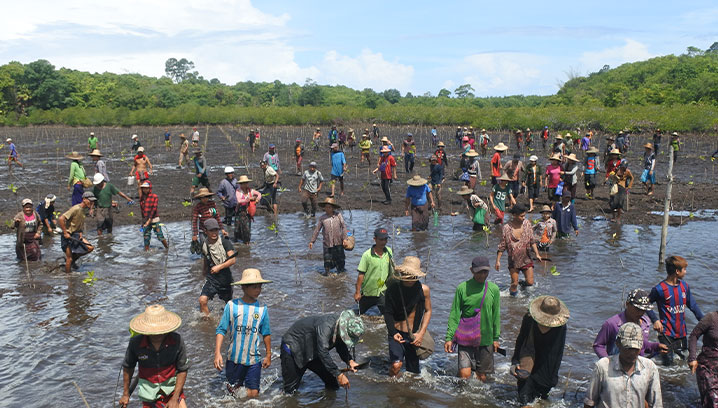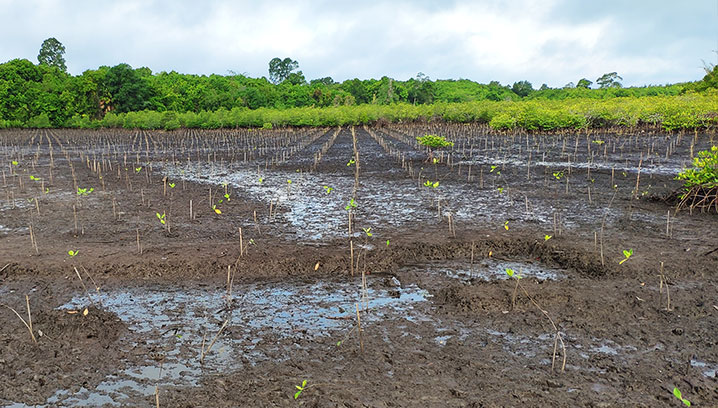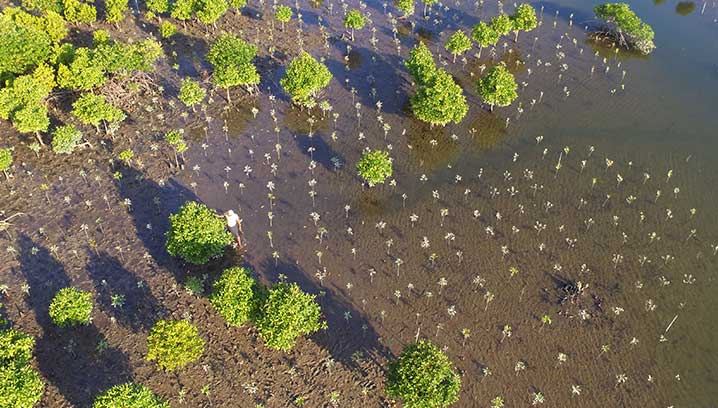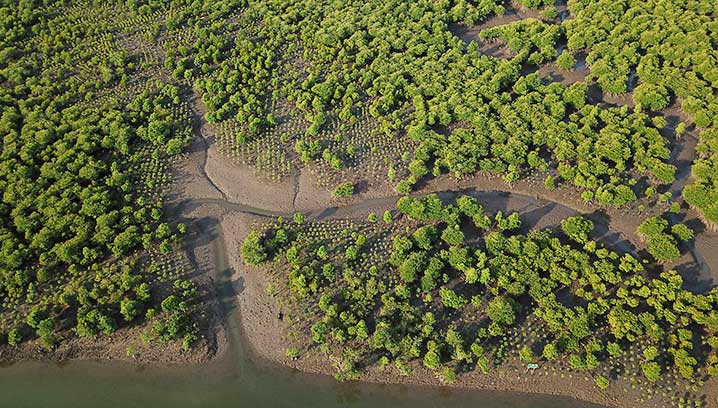
192,800 green climate protectors for Myanmar
One of Funk's sustainability goals is to preserve nature for our children and grandchildren. That's why we've been involved in planting mangroves in Myanmar. Funk started with 140,000 trees in 2019, and 52,800 more mangroves were planted in 2020. Read here what mangroves do for climate protection and how our planting campaigns work.
From greenhouse to nature: how the funk forest has developed in one year
New trees for the Poe Laung river bank
Journey to Myanmar
An interactive insight into the country of Myanmar, the planting campaigns of Funk and the many advantages of the mangroves: This is what the vivid story of our partner CO2OL offers. Travel Southeast Asia from the comfort of your desk!
Discover it now